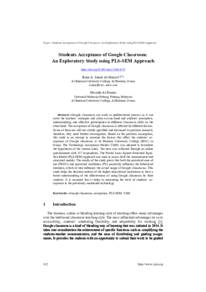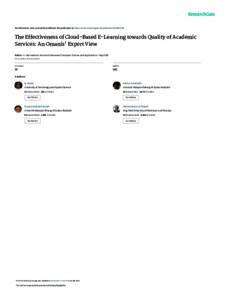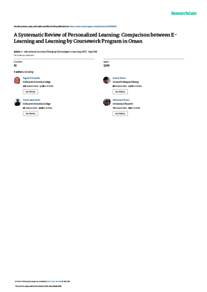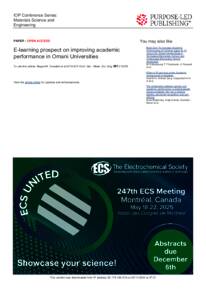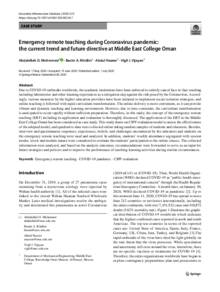Document
Investigating the e-learning acceptance in Oman : application of structural equation modelling approach.
Identifier
DOI: 10.3844/jcssp.2018.368.375
Source
Journal of Computer Science. v. 14, 3, p. 368-375
Contributors
Ghayas, Syed., Author
Echchabi, Abdelghani., Author
Country
United States.
City
New York
Publisher
Science Publications.
Gregorian
2018-01-01
Language
English
Subject
English abstract
Similar to many developing countries, Oman recognizes the importance of e-learning and Information Communication Technology (ICT) to enhance the higher education standards and compete in the global education markets. Many higher education organizations today expect elearning to add value to their organization and hence improve the economy by extending their educational services to students and other students who are not able to access them due to geographical distance limitation. His Majesty the Sultan Qaboos speech in 2008 adds further motivation for the development of the Information systems and technology in Oman by saying "Information technology and communications have now become the main elements that move forward the development process in this third millennium; therefore, we have afforded our attention to finding a national strategy to develop the skills and abilities of citizens in this domain with the aim of further developing e-government services". The Omani government has supported this process substantially through the development of telecom infrastructure and establishment of Information Technology Authority (ITA) to implement national IT infrastructure and supervise the implementation of digital Oman strategy. Although, there is high consensus in the higher educational literature that e-learning acceptance is vital for the competitive advantage of our organizations. Yet, there are still considerable gaps in our e-learning acceptance and understanding of a range of issues concerning both the conceptual and practical as the higher education in Oman is far behind in the development of e-learning acceptance. The lack of e-learning acceptance in the higher education has created problems for most organizations. Hence, this paper focuses on the investigation of the key factors that influence e-learning acceptance in Omani Universities. The study covered a sample of 800 respondents and applied structural equation modelling approach in the analysis. The findings indicated that the students are intending to use e-learning services. On the other hand, the findings revealed that the main variable that influence their behavior are perceived usefulness and perceived ease of use.
ISSN
1549-3636
Resource URL
Category
Journal articles

